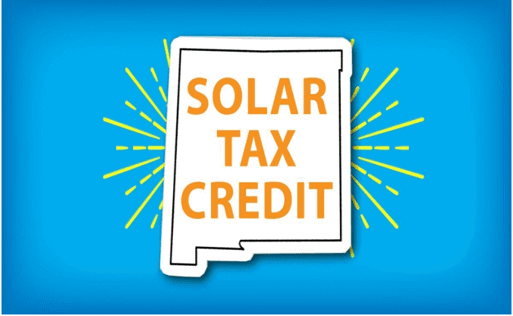As of 2022, thanks to the passage of the Inflation Reduction Act, any homeowner who invests in solar energy for their home can receive a solar investment tax credit (ITC) from the federal government at a deduction up to 30% of the costs of their solar energy system. The 30% ITC will remain at 30% through the year 2032. It will decrease to 25% for any solar energy systems installed in 2033 and will be reduced to 22% for systems installed in 2034. Unless renewed by Congress, the tax credit expires beginning in 2035. To receive the ITC, the installation of the solar energy system must be completed during the tax year that the system was installed.
This blog will provide you with a brief overview of the federal investment tax credit for residential solar energy systems and how to apply for the tax credit. This does not constitute as professional tax or financial advice.
Ensuring Eligibility
As long as you own the solar energy system on your home and have a taxable liability, you are eligible for the ITC. If you are leasing the system, the third-party owner will be the recipient of the ITC. You are also eligible for the ITC if the system is not on your primary residence, so long as the property is owned by you and you are an occupant for part of the year. If you find that your federal tax liability is less than the amount of your ITC savings, you can carry over the remaining credits to the following year.
To claim the ITC, you need the following forms:
Form 5695 and their instructions
This form validates your qualification for renewable energy tax credits
Form 1040 and their instructions
Step 1
The total cost of your solar energy system will be entered on Line 1: Qualified Solar Electric Property Costs of Form 5695. In Lines 2-5, you will add any additional energy related improvements made to your home. You will add this total to Line 6a. On Line 6b, you will multiply Line 6a by the tax credit amount of 30%.
- In this example, there are no tax credits being received for fuel cells installed on your property and there aren’t any tax credits being carried forward from the previous tax year. Therefore, the value of Line 6b will be added to Line 13 of the tax form.
Step 2
Here is where you will calculate if you have sufficient tax liability from your taxable income to receive the full 30% tax credit for the year your system was installed. On page 4 of the instructions for form 5695 you will calculate the maximum tax credit that you can claim. Here you will include any other tax credits for which you may qualify and add that total to Line 3 of the instructions.
Step 3
The amount from Line 3 in our instructions for Form 5695 will then be entered on Line 14 of Form 5695. In Line 15, you will enter the smaller amounts of Line 13 and Line 14. If Line 15 is less than Line 13, you will subtract Line 15 from Line 13 and add this amount to Line 16. The total in Line 16 is the amount that you can claim on the following year’s taxes if any credits roll over.
Step 4
The amount from Line 15 will need to be added to Schedule 3 (Form 1040). Then add this amount to Line 5 of this form. In our example, we have no additional nonrefundable tax credits, so when calculating the total of refundable tax credits, our amount remains the same. The total from Lines 1-5 plus Line 7 will go in Line 8.
Step 5
This number entered in Schedule 3 Form’s Line 8 must be added to Form 1040’s Line 20.
That’s it! You’ve claimed your Federal Solar Investment Tax Credit!
Any additional energy-efficient home improvements made in the fiscal year can qualify you for more tax credits. If you have made these improvements, you will need to complete the second page of Form 5695.
New Mexico Solar Tax Credit

Don’t forget: When filing your taxes with the state you also reap benefits for choosing to go solar. The New Mexico Solar Market Development Tax Credit (SMDTC), also known as the New Mexico Solar Tax Credit, provides you with a 10% tax credit valued up to $6,000.
Positive Energy submits this application for our clients to make the process as easy as possible, but if you went with a company that requires you to submit it yourself, you can apply for this credit by downloading the SMDTC Income Tax Credit instruction manual and by filling out the SMDTC Income Tax Credit Application Form. This is now a refundable tax credit (meaning that you can get a check for the remaining balance beyond your state tax liability if there is any balance left) and is first come, first served*. This tax credit has an annual allotment of $12M*.
Interested in going solar and taking advantage of great savings and tax credits? Contact us! Our no-pressure consultations are always free.
*EMNRD is no longer accepting 2022 SMDTC applications. For projects completed in tax year 2022 (January 1, 2022 – December 31, 2022), the annual funding cap has been reached.

